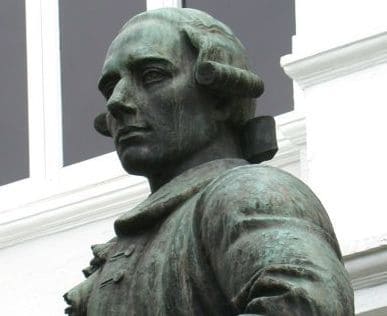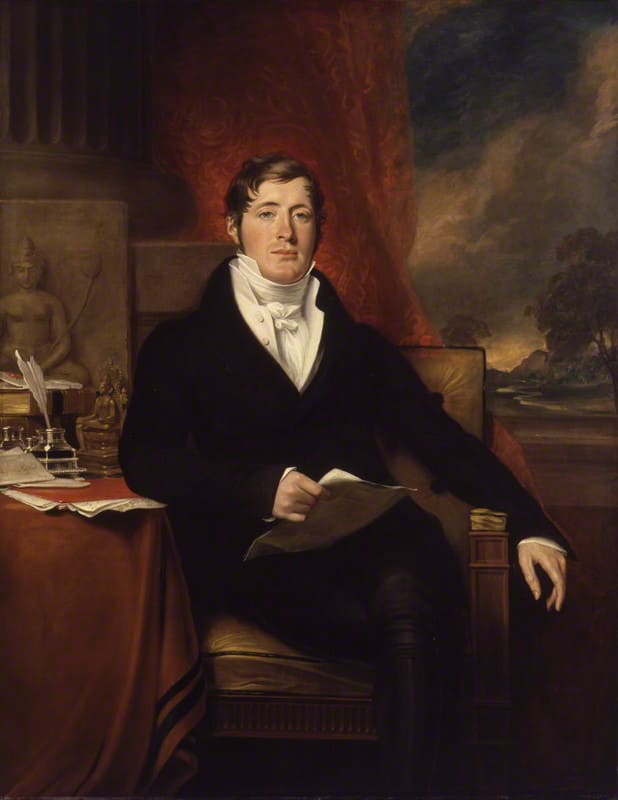A TALE OF TWO ISLANDS
A Review of Rose Gan’s talk to MCG on 6th March 2019
Rose pulled us in to two fascinating lives, those of Francis Light and Stamford Raffles and their impact on the islands of Penang and Singapore. Both were born in the 18th century and came from unassuming families. They relied largely on their own hard work and enterprise to grow themselves into the hugely influential positions they ultimately enjoyed in the development of these two great SE Asian cities.

Rose spoke so fluently and enthusiastically of these men and their exploits that her audience was waiting with bated breath to hear her next sentence. I only wish I had been taught history by someone of her passion, but I was so happy to hear her tales yesterday!

Francis Light was born in Suffolk from an illegitimate liaison and went to sea at the age of 14 in 1754. He served throughout the 7 Years War, before returning home. Unable to settle, he returned to sea with his own command earned from his previous service. He plied the seas of SE Asia and learned to read and write Malay. His interpersonal skills made him a favourite with the local communities and he moved to Phuket, then an influential trading island, in 1772 where he settled and learnt Siamese.
At this time, he met and partnered with the enigmatic and beautiful Martina Rozells, whose background is uncertain. They had five children. His life was still at sea and he was in the Anglo-French War during which he was jailed for a year. His ambition was high and he went to Calcutta, which was the base for the all-powerful East India Company. He got approval for a base in Penang and took Penang for the British in 1786. The island enjoyed huge success as a Freeport for the regional spice trade and by 1792 it had eclipsed Malacca and grew to a population of 10,000.
Tragically, malaria was endemic and although he and Martina had planned to return to England, Light died of this disease at the age of 54 in 1794. Neither Martina, nor his children received any inheritance but his son went on to become the Surveyor General of South Australia and the Rozells family line continues to this day in Malaysia.
Undoubtedly Light was a man of skill, learning and ambition. His grave is still to be seen in the small burial ground opposite the E & O hotel in Penang and Suffolk House, named for the county of his birth, can be visited and dined in. His legacy lives on.

Born 40 years later, Stamford Raffles was born on the water – on a ship in Jamaica. On return to England, he was very much the man of the house, needing to look after his mother and sister due to a permanently absent father. Partly for this reason, but also due to his own drive and ambition, he worked hard as a clerk in the East India Company headquarters and became friends with fellow employees there. He came to the notice of senior managers and eventually was appointed Assistant Secretary to Penang in 1805 at the generous salary of 1500 pounds a year.
Before leaving for Penang, he married a glamorous, almost outrageous widow, Olivia, ten years older than himself. He became Chief Secretary twoyears later. He later met Farquhar in Malacca and the two became friends, although it transpired that Raffles was not averse to stealing many of Farquhar’s ideas and exposing them to management as his own.
He was appointed Governor of Java in 1811 where he actively abolished slavery but, holding tight to British ways and etiquettes, he made enemies of many local sultans and senior East India Company officials, such as Rollo Gillespie. Sadly, Olivia died in 1814 in Bogor and Raffles was moved to Bencoolen, a step down as he had aggravated so many around him.
Not to be deterred, this ambitious man returned to London from 1816-17 taking with him many Asian memorabilia and artefacts. He became the talk of the town and was knighted before marrying his second wife, Sophia.
In 1818, when Malacca was returned to the Dutch, Raffles suggested to the regional head of the EIC that Singapore should become the new British base. This was agreed, at Farquhar’s original idea, and both men were sent there with Farquhar reporting to Raffles. It took just nine days to sign the treaty ceding Singapore to the British – and the “Golden Opportunity” was secured.
Farquhar was left in Singapore, while Raffles returned to Bencoolen with his family. Sadly of his five children born to Sophia, only one survived to adulthood, but even she died at 19. Farquhar and Raffles fell out badly over how to run Singapore, Farquhar being far more broad and international in his views for the city with Raffles wanting to keep it rigidly British. Eventually, Raffles sacked Farquhar in 1823.
Raffles and Sophia decided to go home to England from Bencoolen, but not before losing their worldly goods in a ship’s fire just offshore on leaving. They did get back to London and settled in Highwood House, Hendon. Once more Raffles became the talk of the town as a leading light of the Asiatic Society and founder of the Zoological Gardens. He was a close friend of William Wilberforce, who outlawed slavery for good from UK. Raffles died in 1826, his grave in Hendon, and his proud widow Sophia penned his memoir and got a statue of him erected in Westminster Abbey.
With his name forever linked to the founding of the city super state of Singapore, Raffles will be forever remembered. A man of high ambition, perseverance and achievement. Like Light before him, he was an adventurer and trouble shooter. South East Asia today would be very different had they not ventured forth on their paths to fame.
Thanks again to Rose for her insights into the personal lives and times of these two men – such swashbuckling adventures creating history, the fruits of which live on today.
Review by Melanie Bolland



